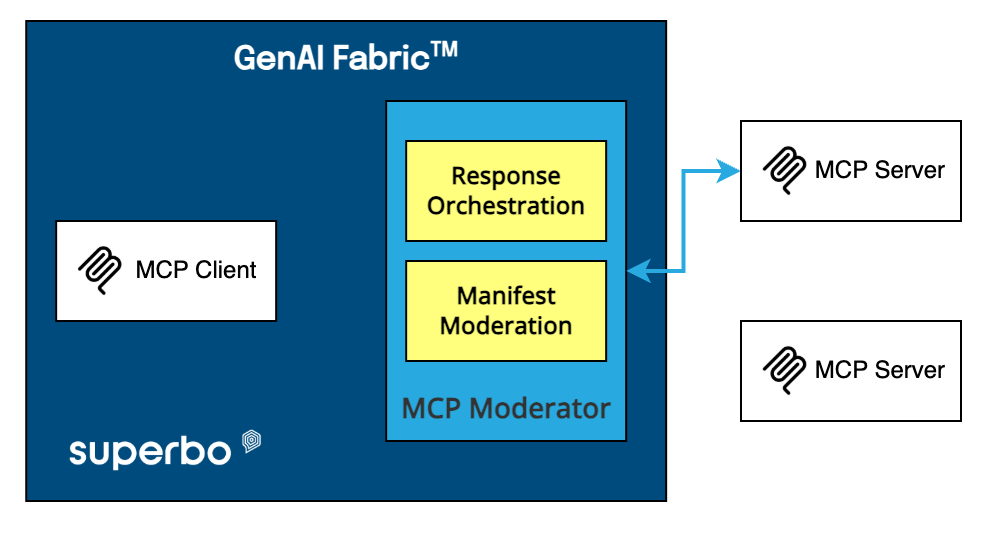Thanks to the recent advancements of Gen AI human-bot interactions have finally switched from bot-driven to fully user-driven ones. Conversation Designers no longer need to put that much of effort to think multiple steps ahead, predict users’ needs and provide paths to follow. The conversation can now flow smoothly from one topic to another, the sentiment is there, the overall coherence and linguistic correctness are no longer an issue. Still, this unprecedented freedom creates other significant challenges that Conversation Designers currently have to face. These are: ensuring cohesion, relevance and reliability of the interactions.
From Diagrams to Conversational Spaces
Looking from the linguistic point of view, the focus switched from structure to cognition. The more arbitrary and subjective the interaction is the more it relies on what the speakers have in common. In Superbo, we believe that the only way to bridge this gap between the user and the bot is to create them a safe space, a Conversational Space™, within which they both can move around freely. The notion of Conversational Spaces™ is Superbo’s GenAI-native descriptive paradigm that ensures the interaction’s adaptability and fluidity that is now enabled by LLMs.
Whether it is a simple use case or a complex agentic workflow the prompts have to be designed to prevent redundancies or hallucinations. The interaction must always be kept within the desired boundaries. A well-defined Conversational Space™ has these boundaries set clearly. Define its scope and the points where it goes sideways. This will help you ensure proper linguistic framing: settle common references, relations between words, establish clear and unambiguous concepts that speakers can refer to.
Set up the Boundaries
Superbo GenAI Fabric™ is a modular architecture: there are no longer linear paths, complete steps, conditions, start or end points. What we need to do, is some interior designing: create a little world that the chatbot will share with each user for a given amount of time. Instead of sketching a graph we need to arrange it: give it a desired function and ambiance.
The first thing the Designer needs to do is to set out the plan, define what this space is going to be. A modern customer support centre? A fancy boutique? A cute café? Or maybe a lively Newsroom? In the past, this part would be covered by the Designers in their onboarding message. In Agentic Workflows the system needs to be prompted to be sure who is doing what and where? This is how Conversational Space™ helps to define the frame for the words meanings and reduce possible hallucinations. Let me give you an example: “a voucher” can be a discount at the payment, entrance to an event, free data bundle or delivery of a decaf latte with a piece of strawberry cake at your door. It all depends on the Space in which your voucher is to be redeemed.
A suitable entry must be designed depending on what your Conversational Space™ is. Places such as customer support centres will receive people who are motivated by a need solve a problem, filing a complaint or seeking information. Other such as boutiques or eateries will have to encourage customers to pop in, launch a relationship, intrigue or delight them. List your Guests’ possible entry points and review them carefully: do you need a fancy gate, a revolving door?
Now, let us see what the Conversational Space™ is to accommodate. Is it crowded or cosy? Who is waiting inside? One Assistant or a team of specialized Agents that bustle about. If this is a team, how do they distribute their duties? What are their specializations? Do they ask each other for help? Do they have a leader? Or part-time employees?
Invite your Guests in
Try to profile your Guests. Who can they be? You know somewhat about their motivations already. Explore further. Is he or she confident? Troubled? Are they in hurry or willing to stick around? Consider their reasons. Both direct and indirect. Make the effort to determine all places they may come from. It will pay back in your traffic later.
Once you know your place and individuals who meet there, let’s see how they interact. Why would they want to talk to each other? What one knows that the other needs to find out? What one can do for the other? What needs to be asked or said to make things happen? Do they have any mutual obligations? Secrets? Restrictions? Company policies or procedures to follow? Make sure you stop your assistants from discussing competitors. Train them in confidential info management. Control redundancy. Make sure they stay professional in all circumstances.
Make them feel good
Once you know who is doing what and where, you can take care of the ambience. It is time to decorate the Conversational Space™ in a suitable style. You can already tell what your guests need. Weather they stressed out, relaxed, curious or annoyed. Make sure your Space makes them feel better. Do they need a back rub first? Or they just popped in to grab something and go? Encourage your guests to explore and enjoy everything that your Space has to offer. Make them feel welcome and happy to stay. Think of any themes or values you want to expose. Prompt your LLM accordingly. Make sure it will later be translated into relevant vocabulary choices and linguistic markers. Your customers will appreciate attention to their brand.
Let them go… and return for more
Whatever great job you do designing your Conversational Space™ your guests will sooner or later want to leave it. In customer service timing is crucial. They need to feel certain you’re not wasting their time. Make sure they leave with what they came for (or more). Design your exit carefully. Make it visible but not imposing. Design the door that is easy to open. When the time comes let your guests go. Check where they went. Take a good look at what’s behind that exit. Is there a way back? Or another Conversational Space™ that you need to design for them? This is how your AI Assistant starts scaling. No matter how many Spaces you maintain do your chores regularly. Revisit and redo them from time to time. Get your guests involved and value their feedback. Now, get ready to welcome them back.







